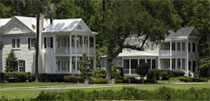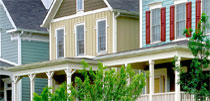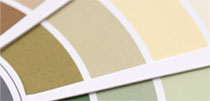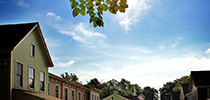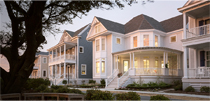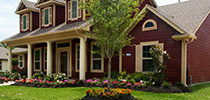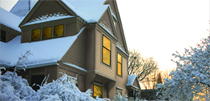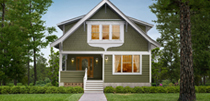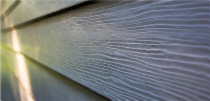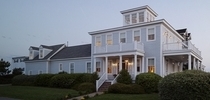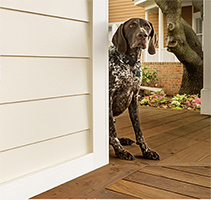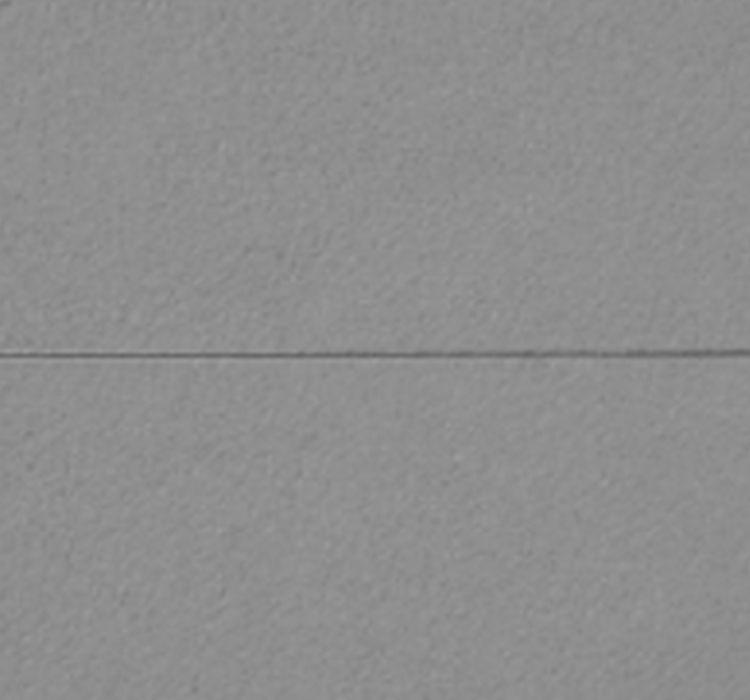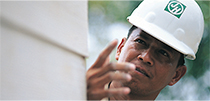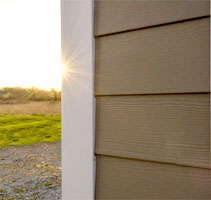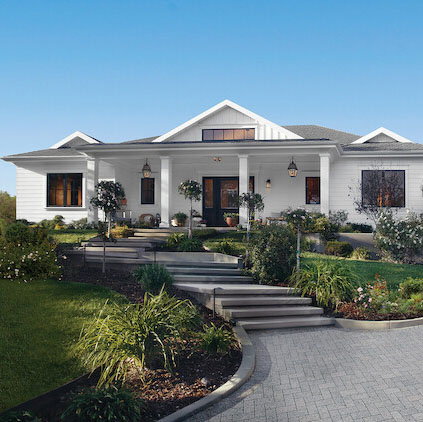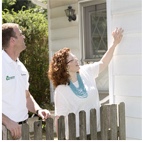by Michael Buck
11/2/2020
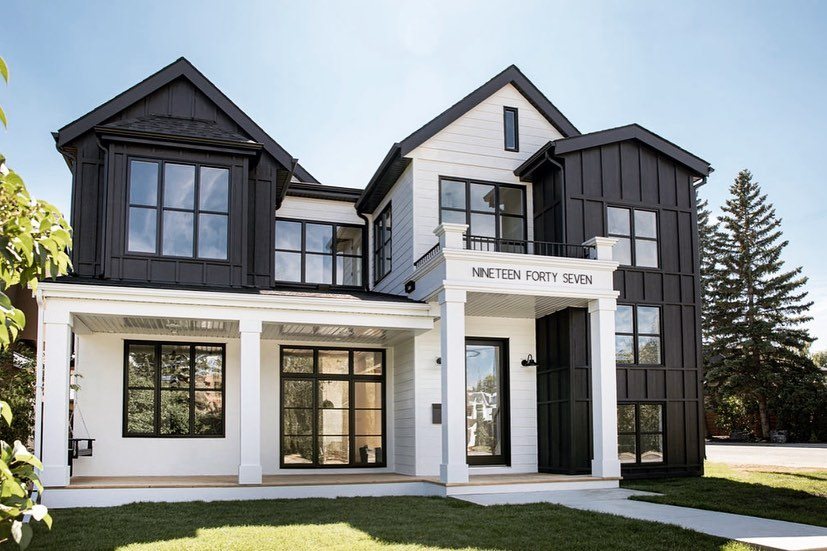
These five exterior design and home color trends for 2021 can help you make smart style choices that look fantastic now and have potential to age well in the long run.
These trends are already showing up in neighborhoods thanks to innovators and early adopters, and are poised to gain further traction in the year ahead. The above example, which is detailed further below, is by Calgary-based Trickle Creek Custom Homes.
While these styles may see increasing popularity, the fact remains that no one can tell you how to feel comfortable in and around your own home. With James Hardie's array of exterior siding and trim products, you’ll be able to choose from a wide range of siding profiles and more than 700 prefinished colors for endless design possibilities to suit your tastes.
Use these up-and-coming style trends to spark your own inspiration and shape the design of your dream home.
Balanced, Elemental Colors
Colors that create a sense of grounding and stability will likely be in more demand next year.
Natural colors are the perfect antidote for 2020. These aren’t the Earth tones of the 70s and 80s – no avocado greens or mustard yellows. Natural colors are more calming and familiar, and draw their inspiration from the outdoors.
Colors to watch are Aged Pewter, Deep Ocean, Timber Bark and Mountain Sage. While the cooler gray tones that were popular over the last decade are still in demand, we see warmer grays, like Aged Pewter, gaining popularity. Projects below are by Infinity Custom Homes, and Hubbard Exteriors, respectively.
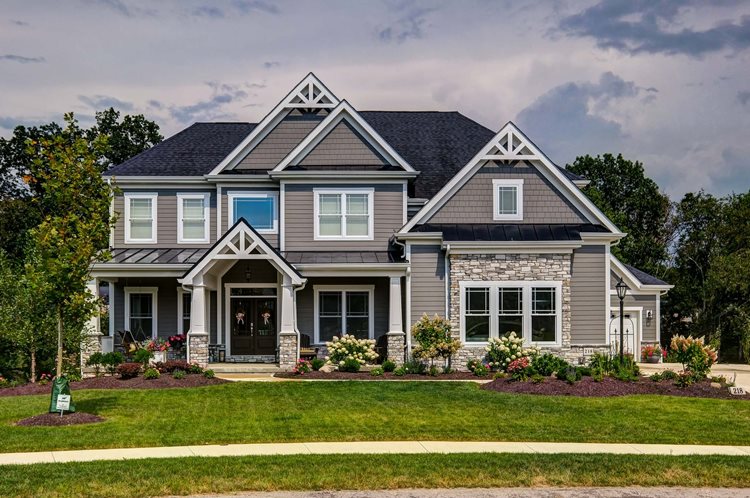
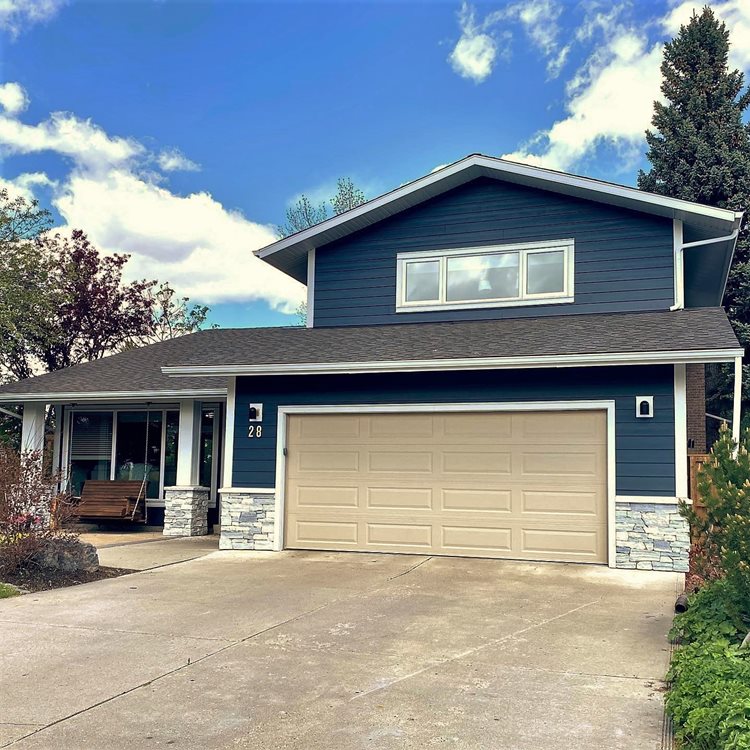
Dark as Differentiator
Expect to see more very dark or black modern farmhouses as homeowners look for a differentiating twist on this popular style.
The modern farmhouse trend has been going strong for years, and the look is still certainly popular. So far it is characterized by a white exterior, typically in a board and batten look, with oversized natural wood porch columns, and large black windows.
Some homeowners are now making their modern farmhouses stand out with dark or black exteriors. This look is very popular on social media and more homeowners are opting for the bolder look on their homes. Iron Gray is a popular choice, as is Black Ash, Black Water and Jet Black. Projects below are from Swift Farm and Dynasty Partners.
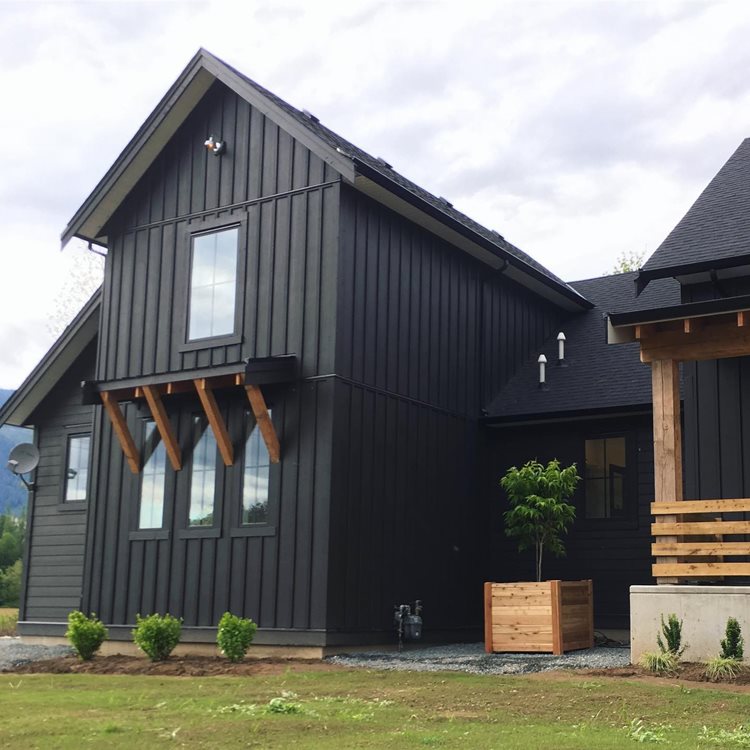
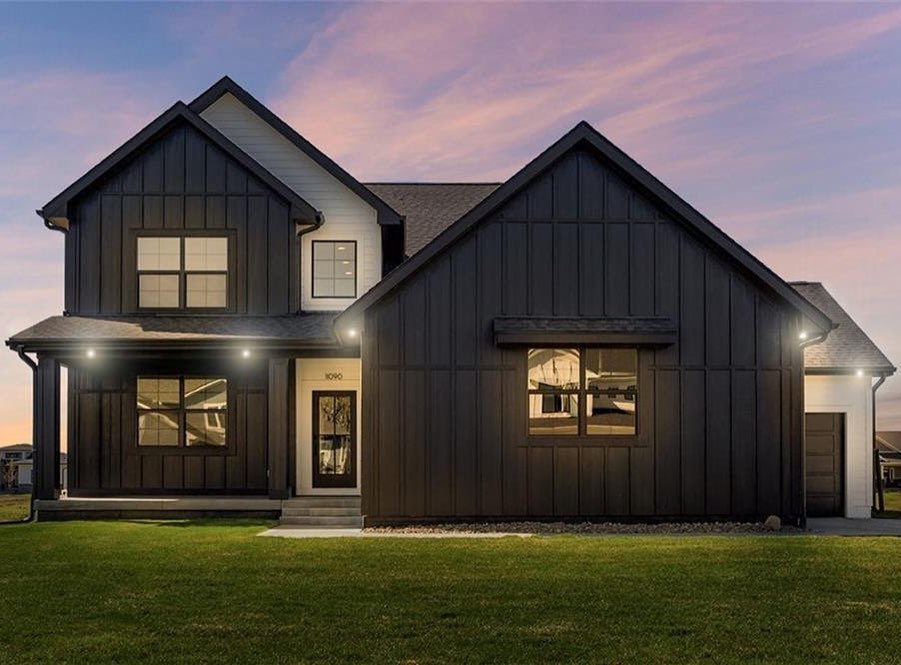
High Contrast Exteriors
Black and white color palettes on full elevations will gain further popularity.
Black accents on white exteriors have been a popular trend for some time. So far, the accents are typically black or dark garage doors, black windows, or black front doors. Now, some homeowners are taking this exterior motif to the next level with full black and white elevations. This look is somewhat related to the black modern farmhouse trend, but is a stunning exterior design in its own right.
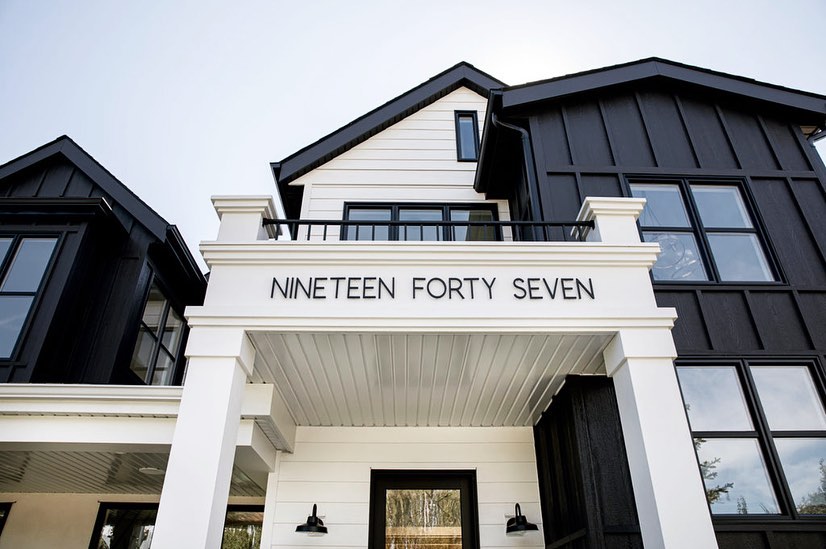
Expanded Use of Transitional Style
Over the coming year, and beyond, look for increased interest in styles that merge traditional and contemporary design elements.
This fusion of style is known as “transitional architecture.” The style is well positioned for increased use coming out of 2020 as homeowners look for familiarity with a modern design update.
Transitional architecture works because classic design elements lend comfort without being nostalgic, while contemporary style adds a less-is-more freshness that evokes stability, without being sparse or unsettling. The finished product is a pleasantly fused style that simultaneously looks brand new and like it has been there forever.
The Modern Farmhouse is probably the most widely known use of transitional style. Some others to keep your eye on are Modern Tudors and Modern Cottages. Projects below are by SD Custom Homes and Willow Homes.
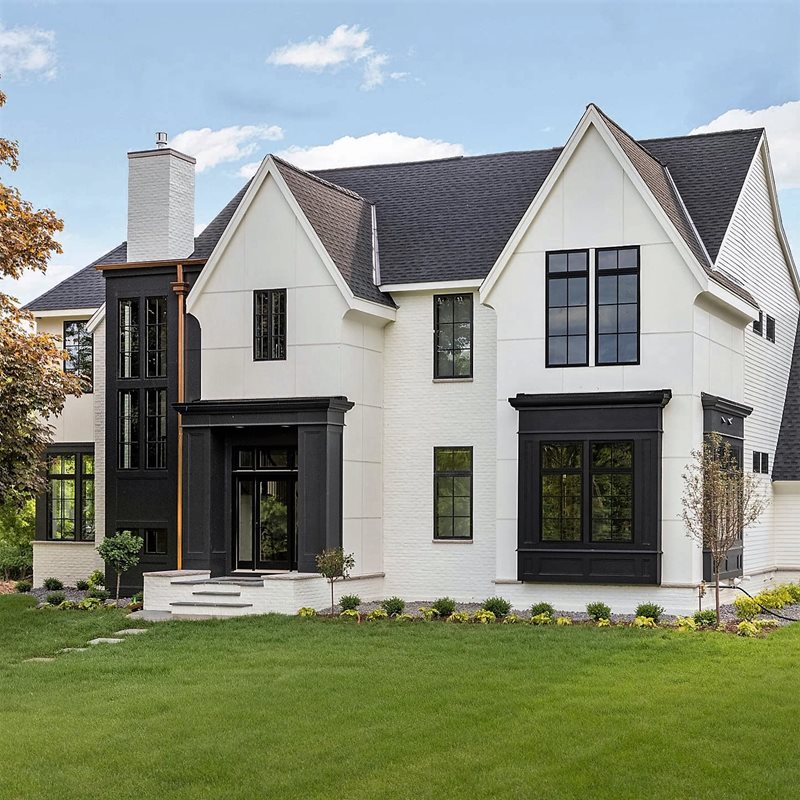
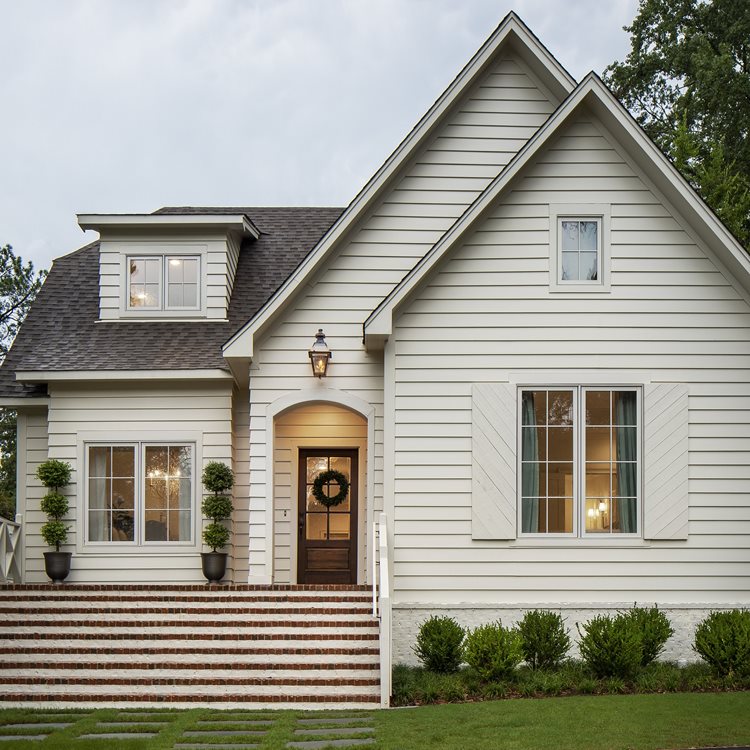
Emphasis on Form and Function
Increased demand for products that look beautiful and provide superior protection.
Style and beauty are paramount when selecting exterior materials, but so are durability and protection. Homeowners are becoming savvier about protecting their investment with high-performance materials that also look incredible. Fiber cement exteriors by James Hardie are a great solution because they are as beautiful as they are hardworking. What’s more is the products are made with sustainability in mind. The raw materials used in James Hardie brand products are at least 75% locally sourced, which reduces energy and emissions from transportation.
Discover More Inspiration
As you consider how to best incorporate specifics elements of these style trends, you can also see what other homeowners across the U.S. and Canada are doing right now. Visit the #MyHardieHome page to explore hundreds of photos from nearly every type of architecture to help spark your inspiration.

